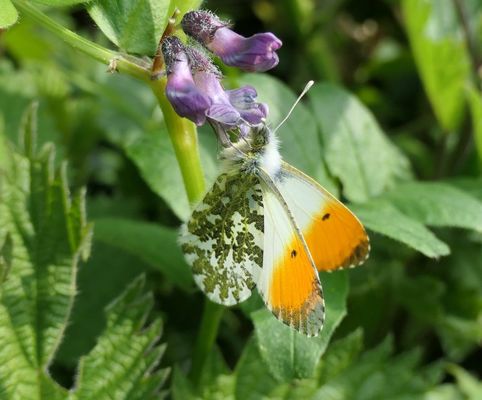IT’S like the land that time forgot – and it’s right at the edge of West Belfast.
The long quarry next to Colin Glen has been a haven for wildlife for all of Dúlra’s life. It was never going to last, of course – the natural world never stands a chance in Ireland when it comes to what we call ‘progress’.
A battery recycling plant is going to be built here, and a reader reported a few weeks ago that hedgerows were being pulled up in the area in what might be preparation for the new factory.
When Dúlra visited this week, there was, thankfully, no sign of destruction, although he only visited the more remote upper part.
On this bright spring day, all seemed well with the world. As you walk down towards the quarry from the Glenside Road, it’s like entering a hidden world. The quarry is surrounded not with trees but with thickets of blackthorn and brambles. If you don’t know your way through the tickets you can easily find yourself dangerously close to the edge of the quarry, but there is a secret way in that we used to use on our way to fish on Colin Mountain. You have to almost crawl through the ditches to get to the safe side.
From here you can sneak up on nature. Dúlra slowly manoeuvred himself to the top of the quarry and gazed down its whole length without any bird or animal being aware of his presence. It was like gazing into a canyon.
As if to prove that the stealth was working, a beautiful male bullfinch gave its low whistle from the bushes and Dúlra slowly turned to see it just a couple of feet away. This finch needs hedgerows to feed on and build its nest, but farmers everywhere – particularly all around West Belfast – are chopping them down or pulling them out. It’s only in truly wild pockets like this that the realm of the beautiful bullfinch remains.
Dúlra lay on his stomach behind a few branches and trained his bins on the quarry. A pair of ravens, the famous fiach dubh, were in full mating mode and soared above the limestone cliffs. Their nest will be on the cliff-face and they’ll already be incubating eggs. Then a crimson kestrel glided in – it too will soon be nesting here, as it has done as long as Dúlra can remember. Here these mighty birds enjoy a solitude that’s getting harder for them to find.
This remote spot attracts not just birds, but an amazing array of plants. Limestone produces alkaline soil that nourishes the land. But it’s not common locally – the Belfast hills are basalt, a dark rock that creates acidic soil. The thin band of chalk that was quarried here is loved by orchids and wildflowers and in summer those flowers attract clouds of butterflies.
Colin mass rock
The quarry is adjacent to one of our most precious artefacts – Colin mass rock. No signs tell people where it is and it remains totally unprotected. In some ways that’s good – its very inaccessibility helped it survive intact from Penal times. If, as expected, work on a new factory is about to begin nearby, let’s hope the authorities are aware that something very precious – priceless even – is there and cannot be disturbed in any way.
As the March sun beamed through the bare branches and lit up the altar and priest’s chair, there were birds galore enjoying spring in the glade all around – goldcrests and treecreepers, chaffinches and jays.
Before leaving, Dúlra said a silent prayer – that God’s creatures continue to find refuge in this special place.
•If you’ve seen or photographed anything interesting, or have any nature questions, you can text Dúlra on 07801 414804.







